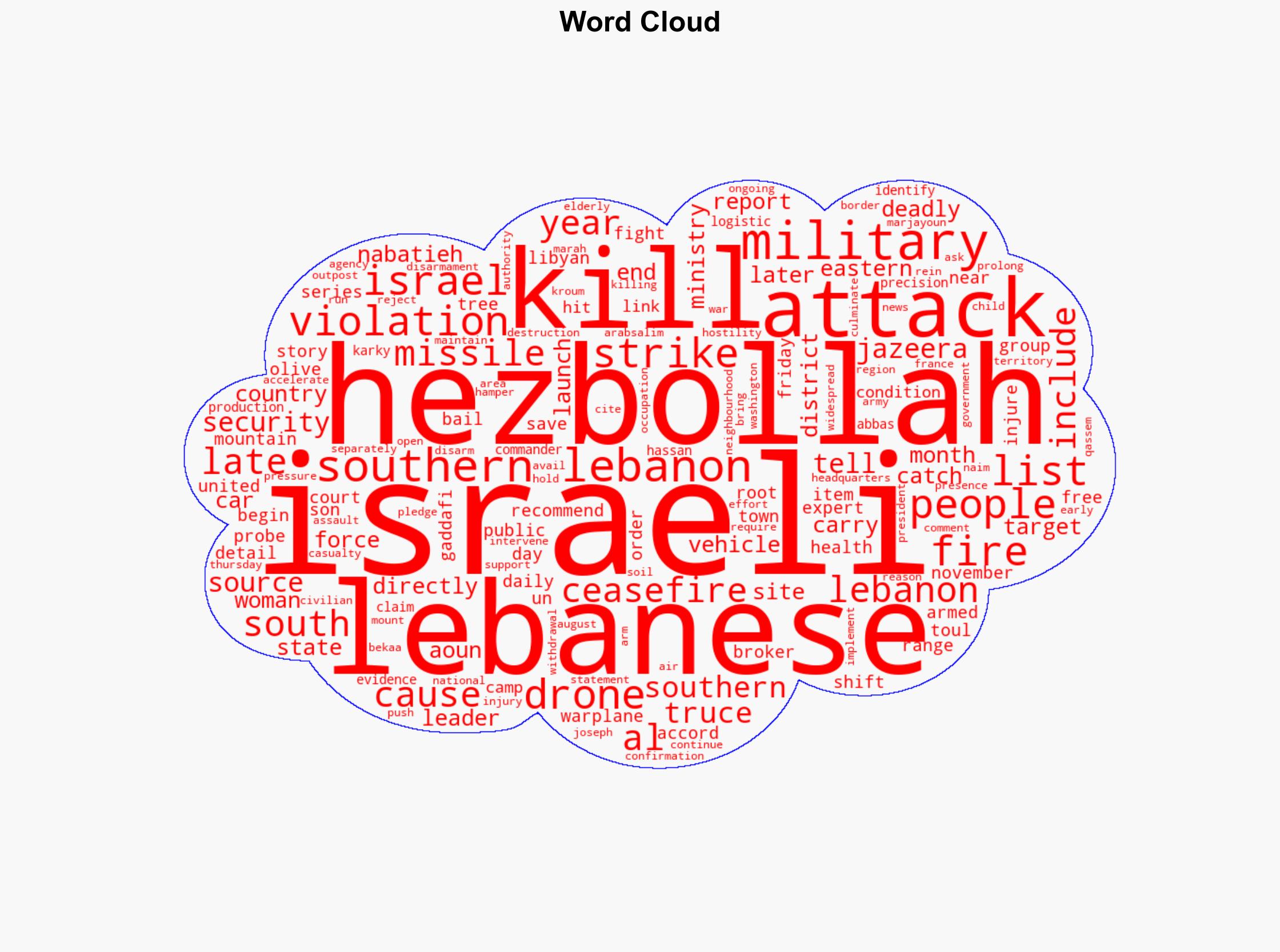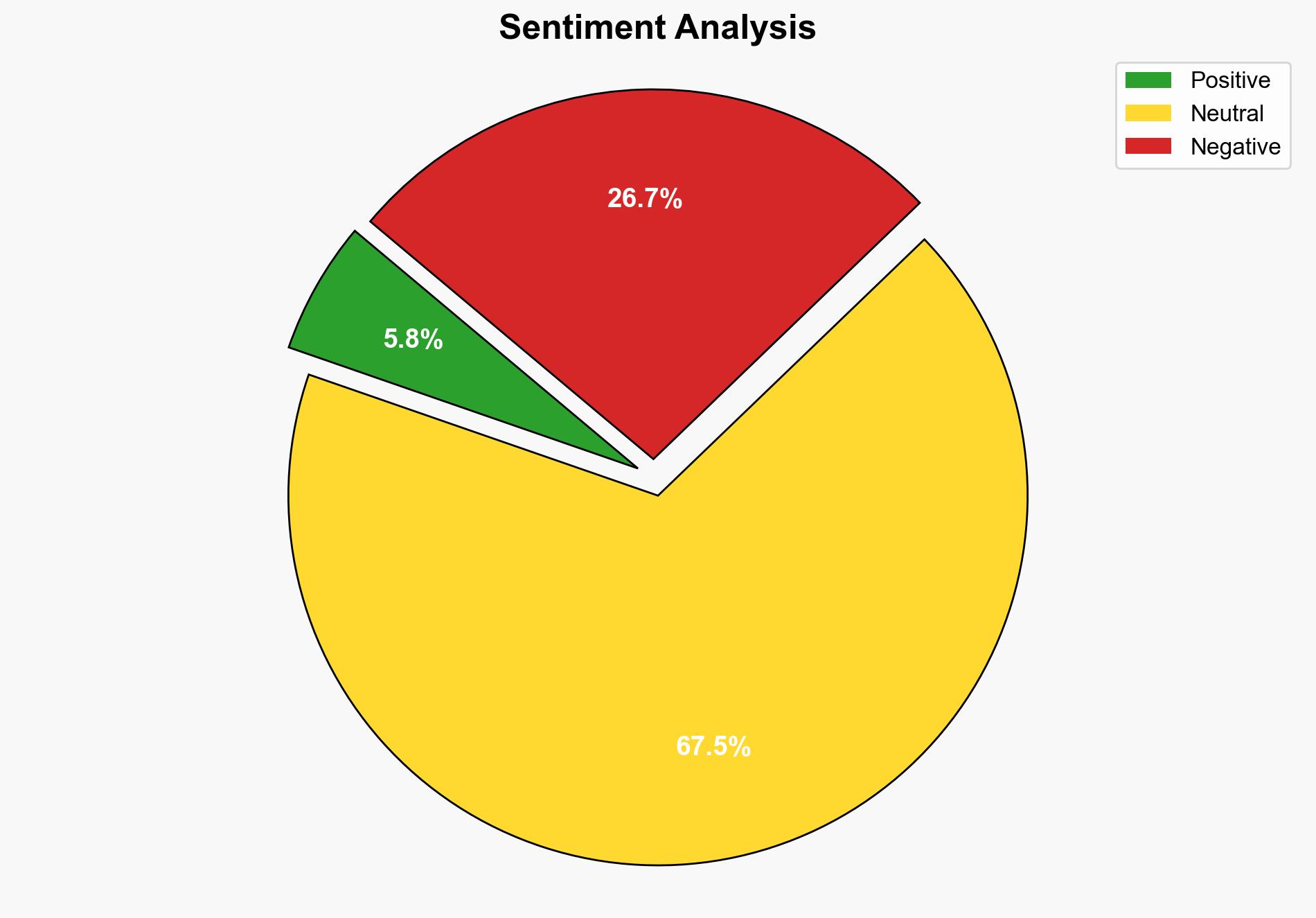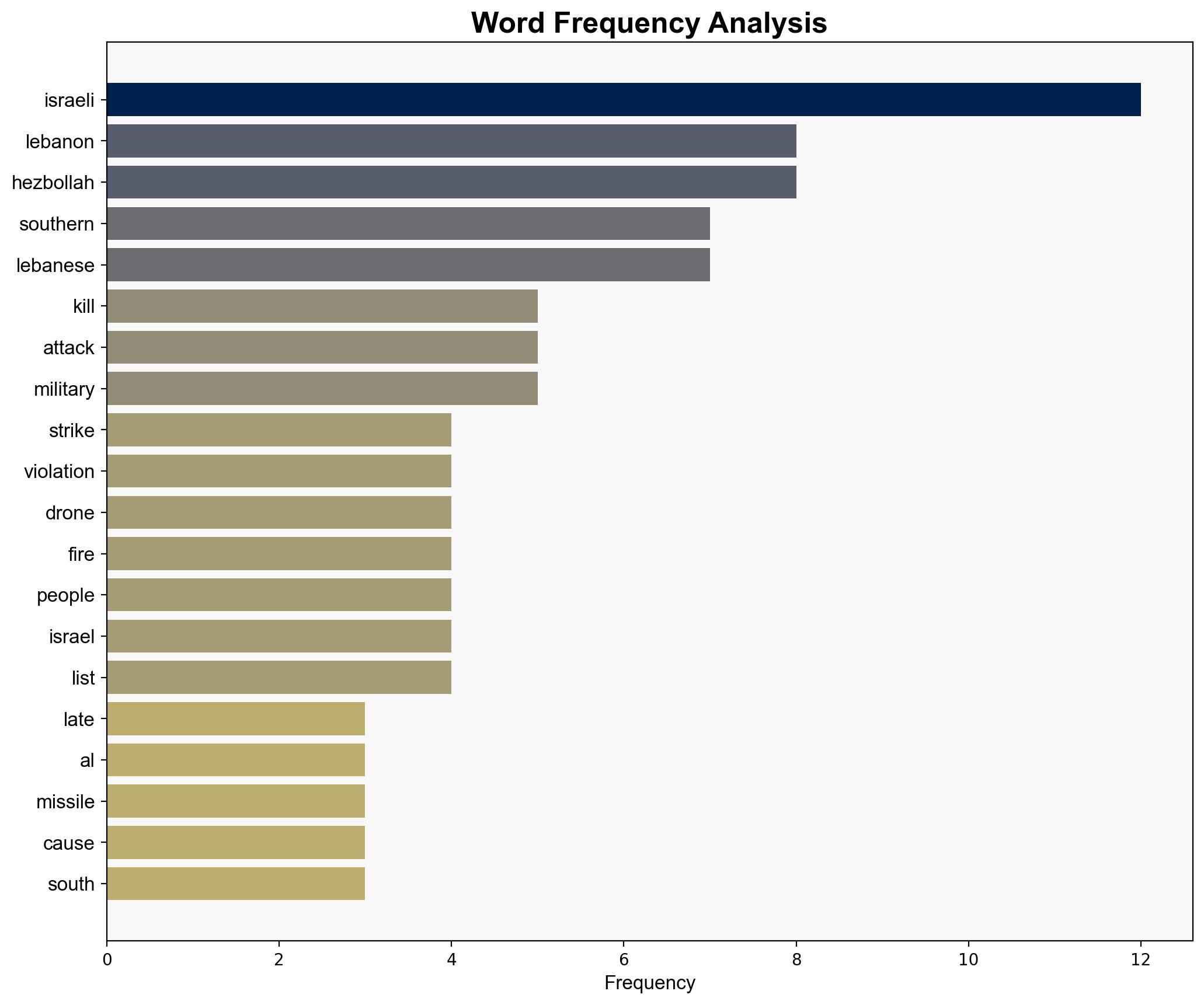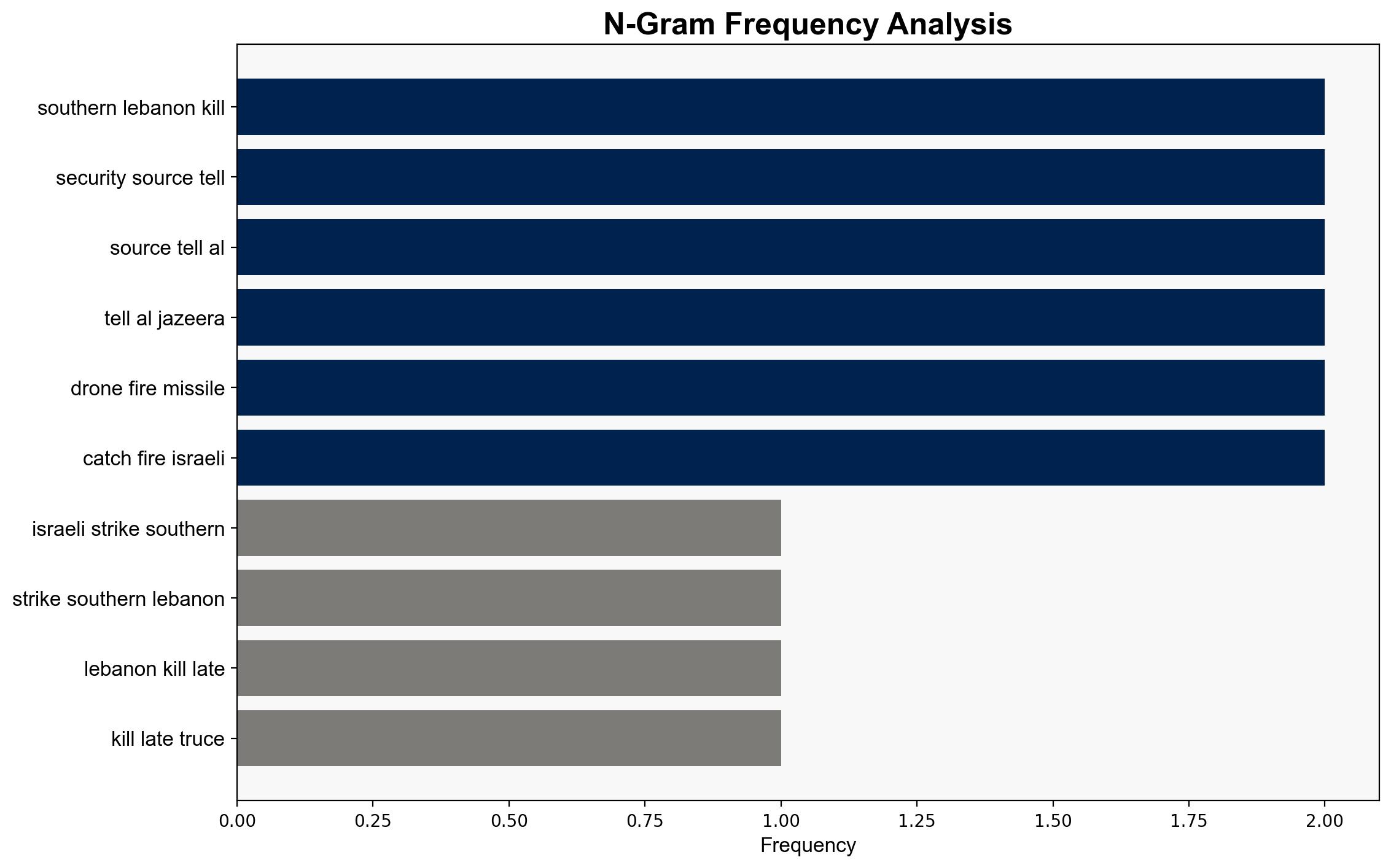Israeli strikes in southern Lebanon kill two in latest truce violation – Al Jazeera English
Published on: 2025-10-24
Intelligence Report: Israeli strikes in southern Lebanon kill two in latest truce violation – Al Jazeera English
1. BLUF (Bottom Line Up Front)
The most supported hypothesis suggests that Israeli strikes in southern Lebanon are a strategic effort to weaken Hezbollah’s military capabilities amid ongoing ceasefire violations. Confidence in this hypothesis is moderate due to conflicting reports and the absence of clear evidence from both parties involved. Recommended action includes diplomatic engagement to de-escalate tensions and verification of truce adherence through international monitoring.
2. Competing Hypotheses
1. **Hypothesis A**: Israeli strikes are a calculated response to perceived threats from Hezbollah, aiming to degrade its military infrastructure and deter future aggression.
2. **Hypothesis B**: The strikes are part of a broader strategy to provoke Hezbollah into a larger conflict, potentially justifying further military action or influencing regional power dynamics.
Using Analysis of Competing Hypotheses (ACH), Hypothesis A is better supported by the pattern of targeted strikes on military sites linked to Hezbollah and the historical context of Israeli-Hezbollah hostilities. Hypothesis B lacks substantial evidence, as there is no clear indication of Israel seeking broader conflict escalation at this time.
3. Key Assumptions and Red Flags
– **Assumptions**: It is assumed that Israeli intelligence accurately identifies Hezbollah targets and that strikes are proportionate responses to ceasefire violations.
– **Red Flags**: The lack of independent verification of the strikes’ targets and outcomes raises questions about potential misinformation. The absence of Hezbollah’s official response adds uncertainty.
– **Blind Spots**: Potential underestimation of Hezbollah’s retaliatory capabilities and regional alliances.
4. Implications and Strategic Risks
– **Escalation Risk**: Continued strikes could lead to a cycle of retaliation, increasing the likelihood of broader conflict in the region.
– **Geopolitical Impact**: Strains on Lebanon’s government and international relations, particularly with countries mediating peace efforts.
– **Economic Consequences**: Prolonged instability may hinder economic recovery efforts in Lebanon and affect regional trade routes.
5. Recommendations and Outlook
- Engage in diplomatic dialogue with key stakeholders, including the United States, France, and regional actors, to reinforce the ceasefire and prevent further escalation.
- Implement international monitoring mechanisms to verify compliance with truce agreements and provide transparency.
- Scenario Projections:
- **Best Case**: Successful diplomatic intervention leads to reinforced ceasefire and reduced hostilities.
- **Worst Case**: Escalation into a full-scale conflict involving regional powers.
- **Most Likely**: Continued low-intensity conflict with periodic violations and diplomatic efforts to manage tensions.
6. Key Individuals and Entities
– Abbas Hassan Karky (identified as a logistic commander of Hezbollah)
– Naim Qassem (Hezbollah leader)
– Joseph Aoun (Lebanese President)
7. Thematic Tags
national security threats, regional focus, counter-terrorism, geopolitical tensions




